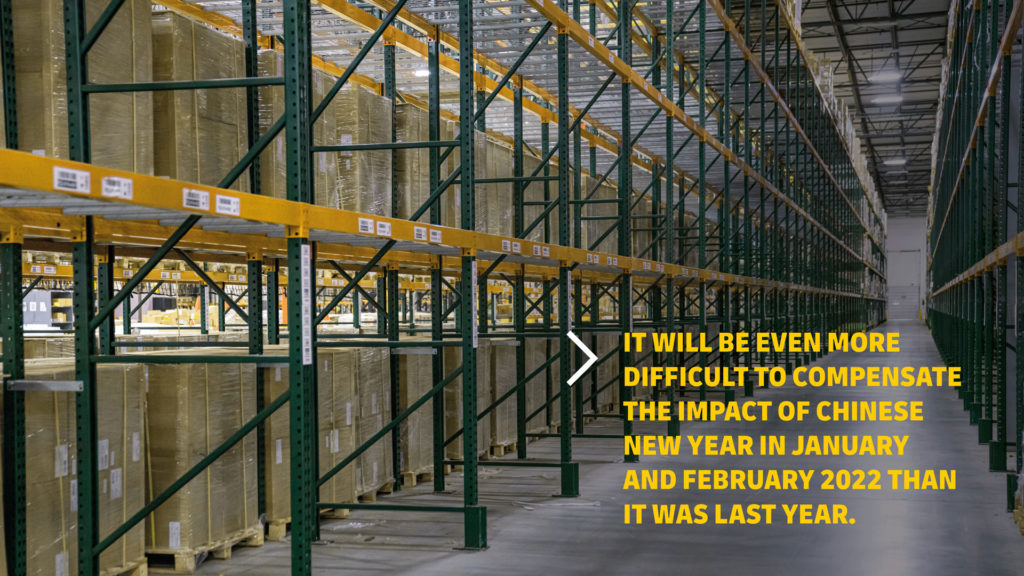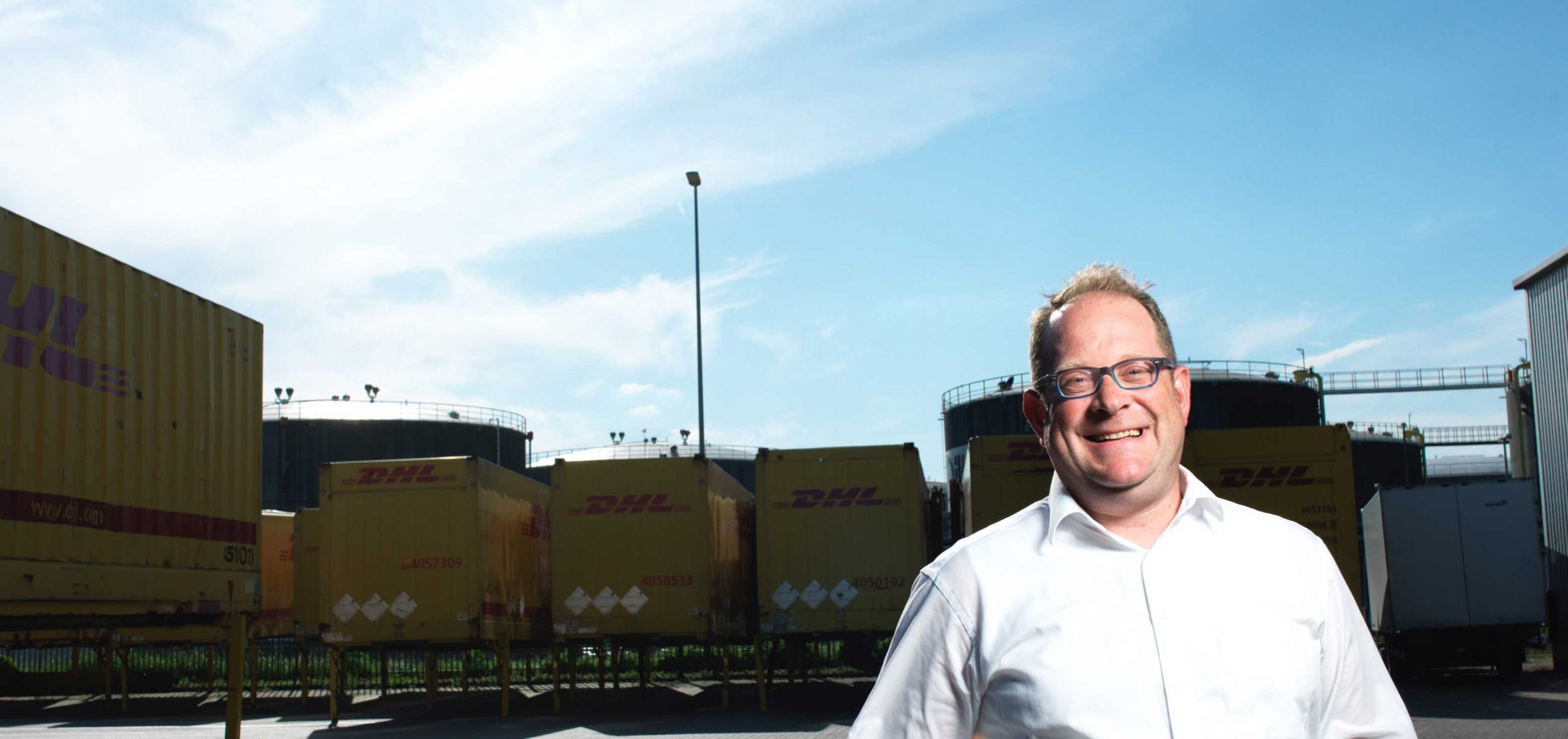
More and more industries depend on China: on the sales market, on imports from China, or on both. Almost everything that happens in China – be it governmental measures as part of the national no-covid strategy or the New Year celebrations – has a direct impact on international logistics nowadays. China is becoming a bottleneck in the global flow of goods, and a strategic response is required.
China: Driving Force and Bottleneck of the International Economy
Even minor events count when occurring in China. Due to the complex network of dependencies, regional incidents, such as the shutdown of single production sites or the temporary closure of an airport or container port, can affect logistics and supply chains as well as industrial production and trade worldwide.
This will not change fundamentally in 2022. As long as the People’s Republic continues its rigorous corona policy, there are likely to be problems with both exports to and imports from China. International and regional logistics remain a challenge, whether you are directly or indirectly involved in trade with China. But besides all the unpredictable events in China, there is one annual event that you can prepare for: Chinese New Year in late January or mid-February.
Chinese New Year: Impact on Europe
In the past, people may have taken only casual note of Chinese calendar peculiarities. In Western Europe, people did not need to know that in China (and many other parts of Southeast Asia) the New Year is not celebrated on January 1 but, according to the traditional lunar calendar, on a new moon between January 21 and February 21. And whether the Year of the Rat or the Year of the Pig had just begun in China, was not given any further importance. That is different today.

With the Chinese lunar years, certain zodiac animals alternate in predetermined cycles as patrons of the respective year. They are assigned to the different elements of wood, fire, earth, metal, and water. The year of the Metal Ox ends on January 31, 2022, and the year of the Water Tiger begins the next day. Much more relevant for importers and exporters, traders, and logistics specialists, however, are the massive accompanying circumstances of the festivities. Their impact on the economy cannot be compared with New Year’s Eve in the West or even Christmas.
New Year in China: Asia Comes to a Standstill
The celebrations traditionally commence on the eve of the new moon and continue for up to 15 days. The first week after the new moon is work-free nationwide. Public life and almost all business in China is at rest. Not only offices or factories are closed, but also some (air) ports and other cargo handling centers. As China is the largest country in Asia, the New Year has a massive impact on the entire continent. The logistical interdependencies between the countries lead to an absolute standstill.

World’s Largest Annual Migration and Reorientation
Since the Chinese New Year is traditionally celebrated within the circle of the immediate and extended family, a veritable mass migration sets in every year for the festivities in the giant realm, whose economy is still driven by migrant workers. In order to distribute this collective movement at least to some extent, many Chinese are given leave in the week before the New Year, which means that economic life is already severely restricted in the run-up to the celebrations.
“At the moment, we still expect the supply chain situation to level off by mid-2022.”
Dirk Jandura, president of the German Federal Association of Wholesale, Foreign Trade, Services (BGA) in an interview with German leading newspaper “Frankfurter Allgemeine Zeitung”
But that is not all: Even after the holidays, the economy in China does not get back into gear as quickly as in Western Europe from January 2 or 3. Many employees use the New Year’s break to reorient themselves professionally, especially since long-term or even permanent employment contracts are not as common as in our working world where collective agreements are in place. And even for those returning to their old jobs, it can take a while to get back to work in a country that stretches more than 4,000 kilometers in both north-south and east-west directions.
In some production facilities, pre-New Year’s capacities will not be reached again until a month after the festivities. All in all, a period of at least three to four weeks must be reckoned with, during which a significant part of the global economic fabric, indeed an entire continent, will be almost completely shut down. Apart from the interruptions to production, international freight and shipping traffic in the entire Southeast Asian region is also restricted during the celebrations. The consequences for European industry and trade, and especially for transport logistics providers, are substantial and more likely to increase than decrease in the long run.
Strategic Planning – A Must for Industry, Trade, and Logistics in China
The extended festive season in China inevitably leads to delays of up to one month in a wide range of deliveries across Asia, which in turn has a negative impact on the entire value chain. Many market participants take precautions by increasing their stocks before the Chinese New Year, that is in the pre-Christmas period. This leads to additional freight demand precisely when there is already a logistical state of exception. Even without the corona pandemic, container quotas are tight and freight rates are high.
Good preparation for the expected delays caused by the Chinese New Year is a must. Only this will allow business operations to continue without interruption in January and February. It is important to analyze exactly which resources are required or what has to be transported, when and how. To book capacity as early as possible, many months in advance, can potentially limit the seasonally high logistics costs in the pre-Christmas season.
Sea, Air, Rail, Road – Many Roads Lead Out of China
Depending on the goods to be carried, various modes of transport come into question. In addition to sea freight, which dominates the market, and air freight, which has limited capacity, rail transport between China and Europe has gained in importance as an alternative after the first pandemic year – all the more so as the rail network has been massively promoted and expanded by the Chinese state government as part of the New Silk Road initiative. With the proper logistics partner, road freight is also a promising alternative that can turn door-to-door service into a reality.
Own plans need to be coordinated with logistics partners and other supply chain participants to meet forecasts and avoid blockages in the chain. Long-term good cooperation with a reliable logistics partner is a priceless benefit both for logistical planning and for addressing specific company needs.
Chinese New Year and Global Pandemic – There Are Better Combinations
Already in 2020, the effects of the corona pandemic and Chinese New Year were amplifying each other. The unexpected increase in demand from both industry and consumers in the second corona year of 2021 then led to a global logistics crisis with supply bottlenecks and lacking capacity. The situation deteriorated successively towards the end of the year. This means that it will be even more difficult to compensate for the impact of Chinese New Year in January and February 2022 than it was last year.
For the whole of 2022, China is expected to maintain its strict covid strategy. This may lead to further shutdowns and unforeseeable logistical problems. The People’s Republic intends to counter the threats to the supply chain with a state-owned logistics group. From a European perspective, this can only be met with a wait-and-see approach. The “China Logistics Group” was founded at the beginning of December 2021 from a merger of five companies and is designed to support global supply chains.

China Trade: Future-Proof with Competent Partners
Some logistics predictions suggest that global supply shortages will spread to other economic sectors in 2022 and that the tight supply situation of 2021 will continue. Seasonal shortages of materials and logistical bottlenecks may even become the norm. A resilient supply chain between Asia and Europe is now the most important factor. With our experience in international transport logistics and our specific China expertise, DHL Freight is happy to help you.

